Will this be the year when China exceeds growth expectations, Brexit turns into Bremain, the Mexican peso soars and Italian banks turn out to the best performing equity asset class?
Saxo Bank, the online multi-asset trading and investment specialist, has today released its annual set of ‘Outrageous Predictions’ for the year ahead.
Continuing in the tradition of making a selection of calls aimed at provoking conversation on what might surprise or shock the investment returns in the year ahead this year’s predictions cover a range of scenarios, including a Chinese growth rebound, an Italian bank rally, Brexit giving way to Bremain and the EU’s willingness to change in the face of populist backlash, among others. The Outrageous Predictions should not be considered Saxo’s official market outlook, it is instead the events and market moves deemed outliers with huge potentials for upsetting consensus views.
Steen Jakobsen, Chief Economist at Saxo Bank, commented: “After a year in which reality has managed to surpass even seemingly unlikely calls – with the Brexit surprise and the US election outcome – the common theme for our Outrageous Predictions for 2017 is that desperate times call for desperate actions.
“With change always happening in times of crisis, 2017 may be a wakeup call which sees a real departure from the ‘business as usual’, both in central bank expansionism and government austerity policies which have characterized the post-2009 crisis.
“As some of our past outrageous predictions have turned out to be far less outrageous that at first thought, it is important that investors are aware of the range of possibilities outside of the market consensus so that they can make informed decisions, even in seemingly unlikely market scenarios.”
It is in this spirit that we release Saxo Bank’s Outrageous Predictions for 2017:
1.China GDP swells to 8% and the SHCOMP hits 5,000
China understands that it has reached the end of the road of its manufacturing and infrastructure growth phase and, through a massive stimulus from fiscal and monetary policies, opens up capital markets to successfully steer a transition to consumption-led growth. This results in 8% growth in 2017, with the resurgence owing to the growth in the services sector. Euphoria over private consumption-driven growth sees the Shanghai Composite Index double from its 2016 level, surpassing 5,000.
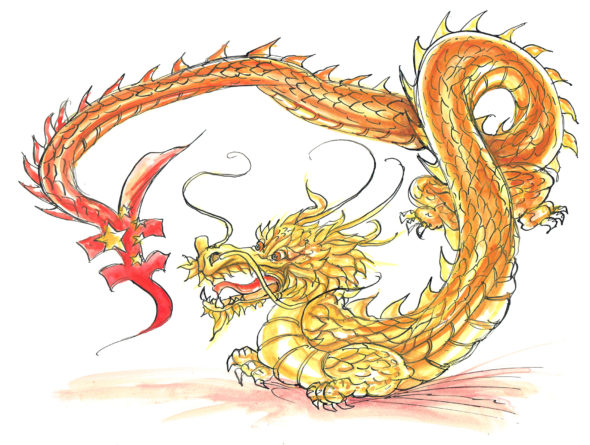
2.Desperate Fed follows BoJ lead to fix 10-year Treasuries at 1.5%
As US dollar and US interest rates rise in increasingly painful fashion in 2017, the testosterone driven fiscal policy of the new US President leads US 10-year yields to reach 3%, causing market panic. On the verge of disaster, the Federal Reserve copies the Bank of Japan’s Yield Curve Control, by fixing the 10-year Government yield at 1.5%, but from a different angle, effectively introducing QE4 or QE Endless. This in turn promptly stops the selloff in global equity and bond markets, leading to the biggest gain for bond markets in seven years. Critical voices are lost in the roar of yet another central bank-infused rally.
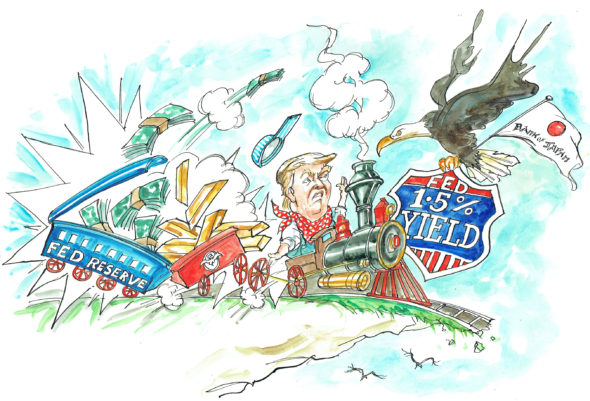
3.High-yield default rate exceeds 25%
With the long-term average default rate for high yield bonds being 3.77%, jumping during the US recessions of 1990, 2000 and 2009 to 16%, 10% and 12% respectively, 2017 sees default rates as high as 25%. As we reach the limits of central bank intervention, governments around the world move towards fiscal stimulus, leading to a rise in interest rates (ex Japan), thus steepening the yield curve dramatically. As trillions of corporate bonds face the world of hurt, the problem is exacerbated by a rotation away from bond funds, widening spreads and making refinancing of low grade debt impossible. With default rates reaching 25%, inefficient corporate actors are no longer viable allowing for a more efficient allocation of capital.
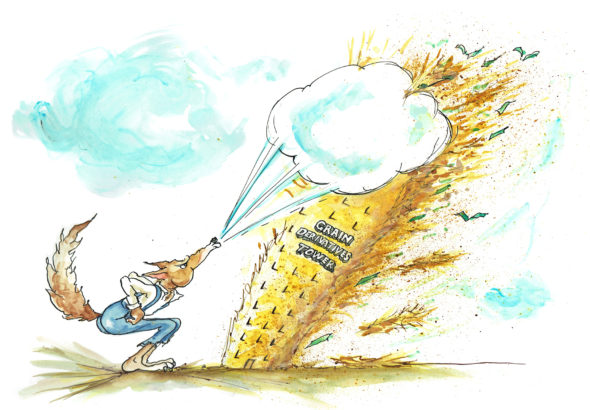
4.Brexit never happens as the UK Bremains
The global populist uprising, seen across both sides of the Atlantic, disciplines the EU leadership into a more cooperative stance towards the UK. As negotiations progress, the EU makes key concessions on immigration and on passporting rights for UK-based financial services firms, and by the time Article 50 is triggered and put before Parliament, it is turned down in favour of the new deal. The UK is kept within the EU’s orbit, the Bank of England hikes the rate to 0.5% and EURGBP plummets to 0.7300 – invoking the symbolism of 1973, the year of UK’s entry into the EEC.

5.Doctor copper catches a cold
Copper was one of the clear commodity winners following the US election; however in 2017 the market begins to realise that the new president will struggle to deliver the promised investments and the expected increase in copper demand fails to materialise. Faced with growing discontent at home, President Trump turns up the volume on protectionism, introducing trade barriers that will spell trouble for emerging markets as well as Europe. Global growth starts weakening while China’s demand for industrial metals slows as it move towards a consumption-led growth. Once HG Copper breaches a trend-line support, going back all the way to 2002 at $2/lb, the floodgates open and a wave of speculative selling helps send copper down to the 2009 financial-crisis low at $1.25/lb.
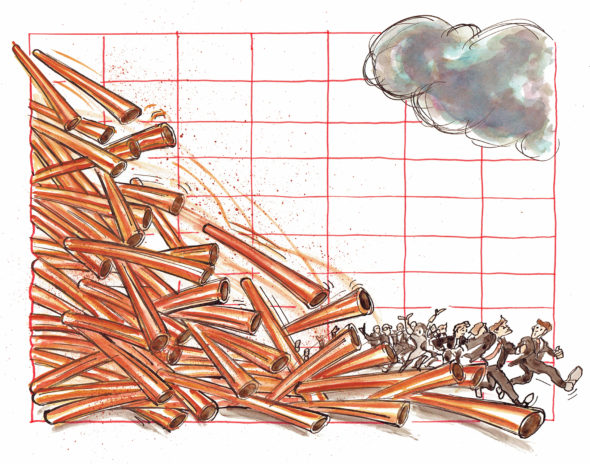
6.Huge gains for Bitcoin as cryptocurrencies rise
Under President Trump the US fiscal spending increases the US budget deficit from $600 billion to $1.2-1.8 trillion. This causes US growth and inflation to sky rocket, forcing the Federal Reserve to accelerate the hike and the US dollar reaches new highs. This creates a domino effect in emerging markets, and particularly China, who start looking for alternatives to the fiat money system dominated by the US dollar and its over-reliance on US monetary policy. This leads to an increased popularity of cryptocurrency alternatives, with Bitcoin benefiting the most. As the banking systems and the sovereigns of Russia and China move to accept Bitcoin as a partial alternative to the USD, Bitcoin triples in value, from the current $700 level to $2,100.
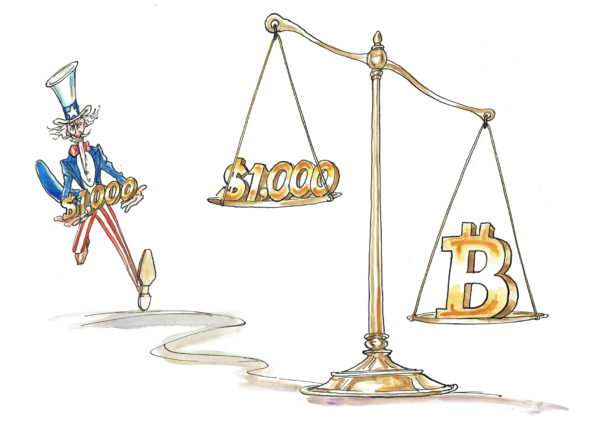
7.US healthcare reform triggers sector panic
Healthcare expenditure is around 17% of GDP compared to the world average of 10% and an increasing share of US population cannot pay for their medical bills. The initial relief rally in healthcare stocks after Trump’s victory quickly fades into 2017 as investors realise that the administration will not go easy on healthcare but instead launches sweeping reforms of the unproductive and expensive US healthcare system. The Health Care Sector SPDF Fund ETF plunges 50% to $35, ending the most spectacular bull market in US equities since the financial crisis.
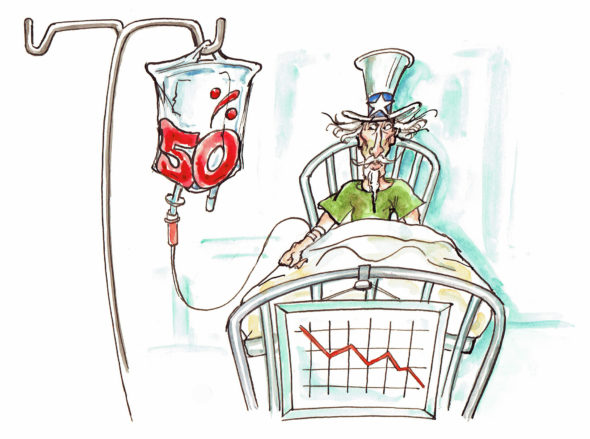
8.Despite Trump, Mexican peso soars especially against CAD
The market has drastically overestimated Donald Trump’s true intention or even ability to crack down on trade with Mexico, allowing the beaten-down peso to surge. Meanwhile Canada suffers as higher interest rates initiate a credit crunch in the housing market. Canadian banks buckle under, forcing the Bank of Canada into quantitative easing mode and injecting capital into the financial system. Additionally, CAD underperforms as Canada enjoys far less of the US’ growth resurgence than it would have in the past because of the longstanding hollowing out of Canada’s manufacturing base transformed from globalisation and years of an excessively strong currency. CADMXN corrects as much as 30% from 2016 highs.
9.Italian banks are the best performing equity asset
German banks are caught up in the spiral of negative interest rates and flat yield curves and can’t access the capital markets. In the EU framework, a German bank bailout inevitably means an EU bank bailout, and this comes not a moment too soon for the Italian banks which are saddled with non-performing loans and a stagnant local economy. The new guarantee allows the banking system to recapitalise and a European Bad Debt Bank is established to clean up the balance sheet of the eurozone and get the bank credit mechanism to work again. Italian bank stocks rally more than 100%.
10.EU stimulates growth through mutual euro bonds
Faced with the success of populist parties in Europe, and with the dramatic victory of Geert Wilders far-right party in the Netherlands, traditional political parties begin moving away from austerity policies and favouring instead Keynesian-style policies launched by President Roosevelt post the 1929 crisis. The EU launches a stimulus six-year plan of EUR 630 billion backed by EU Commission President Jean-Claude Juncker, however to avoid dilution resulting from an increase in imports, the EU leaders announce the issuance of EU bonds, at first geared towards €1 trillion of infrastructure investment, reinforcing the integration of the region and prompting capital inflows into the EU.
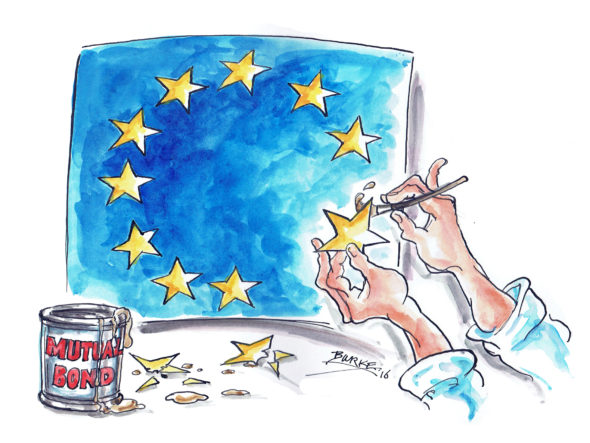
The whole publication “Outrageous Predictions for 2017” and more details can be found here:
http://pl.saxobank.com/campaigns/Pages/outrageous-predictions-2017.aspx
https://www.tradingfloor.com/publications/outrageous-predictions